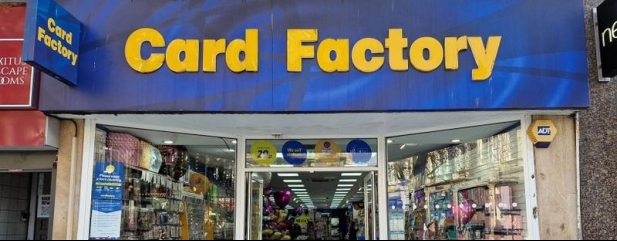Archived article
Please note that tax, investment, pension and ISA rules can change and the information and any views contained in this article may now be inaccurate.
Card Factory correction looks completely overdone

AJ Bell is an easy to use, award-winning platform Open an account
We've accounts to suit every investing need, and free guides and special offers to help you get the most from them.
You can get a few handy suggestions, or even get our experts to do the hard work for you – by picking one of our simple investment ideas.
All the resources you need to choose your shares, from market data to the latest investment news and analysis.
Funds offer an easier way to build your portfolio – we’ve got everything you need to choose the right one.
Starting to save for a pension, approaching retirement, or after an explainer on pension jargon? We can help.
Please note that tax, investment, pension and ISA rules can change and the information and any views contained in this article may now be inaccurate.

We urged readers to buy Card Factory (CARD) at 98.9p on 11 July on the grounds the cash-generative retailer’s growth prospects were underappreciated and its low valuation suggested significant re-rating scope.
Shares also highlighted the value-focused greetings card-to-gift seller’s modest share of a large TAM (total addressable market) and its capacity for returning cash to shareholders through dividends, as well as undertaking growth-enhancing acquisitions having reduced its debt levels.
WHAT HAS HAPPENED SINCE WE SAID BUY?
The shares have basically round-tripped to leave our call 3.3% in the red. Stunning early gains arose on no news flow, with the stock peaking at 143p on 23 September for a 45% gain on paper, before plunging on mixed first-half results (24 September).
Adjusted pre-tax profit slumped the best part of 35% to £14.5 million in the six months ended 31 July 2024, which Card Factory blamed on operating cost inflation and the ‘phasing of strategic investments’, and full year profits will be second half weighted, meaning much hinges on the important Christmas season.
WHAT SHOULD INVESTORS DO NOW?
Investors who failed to book profits on the way up should average down and buy more stock. Chief executive Darcy Willson-Rymer’s growth strategy has clear momentum with all channels in growth in the first half, demonstrating that demand for Card Factory’s value offering of gifts, balloons, cards and party supplies remains robust.
The sell-off looks overly hash considering the company left its full-year 2025 guidance unchanged and declared an interim dividend for the first time in five years, suggesting confidence in the outlook.
Strategic progress in the Partnerships division excites too, with Card Factory expanding its partnership with Aldi to cover the whole of its UK and Irish estate, effectively doubling the revenue opportunity, and having secured a US market entry through a wholesale partnership with an as-yet-unnamed retailer which will begin trading ahead of Christmas.
Card Factory continues to look too cheap on a single-digit forward multiple of earnings.
These articles are provided by Shares magazine which is published by AJ Bell Media, a part of AJ Bell. Shares is not written by AJ Bell.
Shares is provided for your general information and use and is not a personal recommendation to invest. It is not intended to be relied upon by you in making or not making any investment decisions. The investments referred to in these articles will not be suitable for all investors. If in doubt please seek appropriate independent financial advice.
Investors acting on the information in these articles do so at their own risk and AJ Bell Media and its staff do not accept liability for losses suffered by investors as a result of their investment decisions.
The value of your investments can go down as well as up and you may get back less than you originally invested. We don't offer advice, so it's important you understand the risks, if you're unsure please consult a suitably qualified financial adviser. Tax treatment depends on your individual circumstances and rules may change. Past performance is not a guide to future performance and some investments need to be held for the long term.
 magazine
magazine